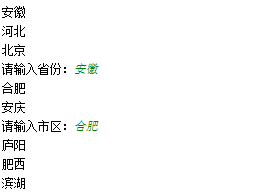一、元素分类
# 有如下值集合 [11,22,33,44,55,66,77,88,99,90...],将所有大于 66 的值保存至字典的第一个key中,将小于 66 的值保存至第二个key的值中。
# 即: {'k1': 大于66的所有值, 'k2': 小于66的所有值}
list1 = [11,22,33,44,55,66,77,88,99,90]
dic1 = {
'k1':[],
'k2':[]
}
for l in list1:
if l > 66:
dic1['k1'].append(l)
else:
dic1['k2'].append(l)
print(dic1)
二、查找
1、 查找列表中元素,移除每个元素的空格,并查找以 a或A开头 并且以 c 结尾的所有元素
li = ["alc", " aric ", "Aex", "Tny", "rain"]
list1 =[]
for l in li:
#使用strip方法确定能寻找到所有元素,startwith,endwith按条件进行查找
if l.strip().startswith('a'or 'A') and l.strip().endswith('c'):
#print(l.strip())
list1.append(l.strip())
print(list1)
2、元组
tu = ("alc", " aric", "Alx", "Tny", "rain")
#找出的元素放到一个新列表中,因为元组中不能增加元素
list2 =[]
for l in tu:
#使用strip方法确定能寻找到所有元素,startwith,endwith按条件进行查找
#if 判断遇到or和and是需要注意执行成功时的判断
if l.strip().startswith('a'or 'A') and l.strip().endswith('c'):
#print(l.strip())
list2.append(l.strip())
print(list2)
3、字典
dic = {'k1': "alx", 'k2': ' aric', "k3": "Alx", "k4": "Tny","k5":" Anc "}
#定义一个空字典
dic1 = {}
for k,v in dic.items():
if (v.strip().startswith('a') or v.strip().startswith('A')) and v.strip().endswith('c'):
print(v)
dic1[k] =v
print(dic1)
三、输出商品列表,用户输入序号,显示用户选中的商品
# 商品
li = ["手机", "电脑", '鼠标垫', '键盘']
for num,v in enumerate(li,1):
print(num,v)
choice = int(input("请选择商品:"))
choice1=choice-1
if choice1>=0 and choice1<=len(li)-1:
print(li[choice1])
else:
print("商品不存在")
四、购物车
# 功能要求:
# 要求用户输入总资产,例如:2000
# 显示商品列表,让用户根据序号选择商品,加入购物车
# 购买,如果商品总额大于总资产,提示账户余额不足,否则,购买成功。
# 附加:可充值、某商品移除购物车
方法一:
goods = [
{"product": "电脑", "price": 1999},
{"product": "鼠标", "price": 10},
{"product": "iphone", "price": 5000},
{"product": "kindle", "price": 998},
]
#已经买到的商品
list_buy = []
#输入总资产
all_money = 0
all_money = int(input("请输入总资产:"))
#输出所有的产品
for key,i in enumerate(goods,1):
print(i['product'],i['price'])
#当条件成立时,在购买环节循环
while True:
#选择需要买的商品
choice = input("请选择商品(y/Y进行结算购买):")
#是否进行结算
if choice.lower() == "y":
break
#循环所有的商品与选择商品进行对比,如果存在,就添加到list_buy中
for v in goods:
if choice == v["product"]:
list_buy.append(v)
#输出所有打算购买的商品
print(list_buy)
#定义商品总价初始值
total_price = 0
for p in list_buy:
#计算所有商品价格
total_price = total_price+p["price"]
if total_price>all_money:
print("你的钱不够,请充值%d元"%(total_price-all_money))
chongzhi = int(input("输入充值金额:"))
all_money +=chongzhi
else:
print("购买成功")
print(list_buy)
方法二:
goods = [
{"product": "电脑", "price": 1999},
{"product": "鼠标", "price": 10},
{"product": "iphone", "price": 5000},
{"product": "kindle", "price": 998},
]
salary = int(input("请输入工资:"))
#dic_shop_cart = {"product":{"price":0,"num":0}}
dic_shop_cart = {}
#循环输出所有产品
for p in goods:
print(p['product'],p['price'])
while True:
choice = input("请选择购买的商品(y/Y进行结算):")
if choice.lower() == 'y':
break
#循环所有商品
for item in goods:
#判断选择的商品是否在所有商品中
if item["product"] == choice:
#如果存在,就把商品赋值给product
product = item["product"]
#如果商品在字典dic_shop_cart中,字典中num就加1
if product in dic_shop_cart.keys():
dic_shop_cart[product]["num"] = dic_shop_cart[product]["num"] + 1
#如果不在,就第一次添加到字典中
else:
dic_shop_cart[product] = {"num":1,"single_price":item["price"]}
print(dic_shop_cart)
sum_price = 0
for k,v in dic_shop_cart.items():
# print(k,v)
t_price = v["single_price"]*v["num"]
print("购买%s的数量为%s:总价为%d"%(k,v["num"],t_price))
sum_price=sum_price+t_price
print("所有商品总价为:%s"%sum_price)
if sum_price>salary:
print("你的钱不够,哈哈哈。。。,别买了吧")
else:
print("购买成功,有钱人啊。。。")
输出结果:

五、用户交互,显示省市县三级联动的选择
dic = {
"河北": {
"石家庄": ["鹿泉", "藁城", "元氏"],
"邯郸": ["永年", "涉县", "磁县"],
},
"北京": {
"大兴": ["黄村", "清源", "天宫院"],
"海淀": ["中关村", "西二旗", "五道口"],
},
"安徽": {
"合肥": ["庐阳", "肥西", "滨湖"],
"安庆": ["桐城", "宜秀区", "岳西"],
}
}
for p in dic:
print(p)
p1 = input("请输入省份:")
if p1 in dic.keys():
for s in dic[p1]:
print(s)
s1 = input("请输入市区:")
if s1 in dic[p1].keys():
for q in dic[p1][s1]:
print(q)
else:
print("市区还没有录入")
else:
print("省份还没有录入")
执行结果:
